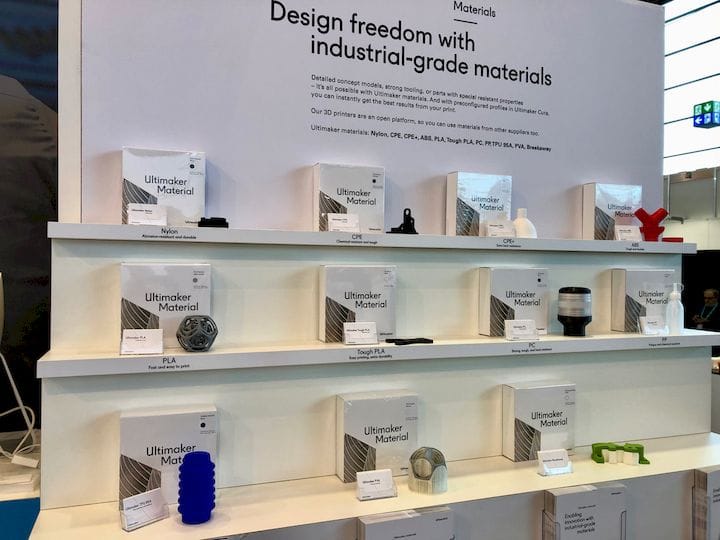![Some of Ultimaker’s professional 3D printing materials [Source: Fabbaloo]](https://fabbaloo.com/wp-content/uploads/2020/05/ultimaker-materials2-1_result_img_5eb09938d4065.jpg)
Ultimaker’s powerful Material Alliance Program is growing rapidly, but what does this mean?
The Ultimaker Material Alliance Program is a special database of print profiles that’s kept online in Ultimaker’s cloud system. The idea is that someone using a cloud-connected Ultimaker system could instantly pull down a pre-made print profile for their specific machine and that specific filament.
This makes 3D printing much more reliable and eliminates a lot of guesswork out of 3D printing, where often a new filament is iteratively tested by printing objects until the optimum print parameters are discovered. That should mostly go away when using pre-certified print profiles.
It does not, however, eliminate all errors. There will always be things that go wrong, but pre-made profiles certainly remove a ton of effort.
Now we see that Ultimaker announced that more than 80 — yes, eighty — companies have joined their program to provide print profiles for their materials. They say:
“Ultimaker … announced … that the Ultimaker Material Alliance Program has now influenced over 80 companies worldwide to develop material print profiles for FFF 3D printing.“
This doesn’t mean they have all submitted their information, but rather that they will be. It’s more of a continuous process where new profiles would be introduced whenever a new material or machine appears. But what’s of most interest me is the sheer number of companies involved: 80.
While there are a large number of filament suppliers across the world today, I would be hard pressed to list 80 if asked. So it appears that Ultimaker has somehow corralled the majority of suppliers to participate in their advanced material system. That is significant.
Recently I’ve been speculating about the need for this type of service, except one that is open and available to all machines and all material suppliers. Such a service would dramatically affect the usage of literally all desktop 3D printers, as it would provide similar advantages in ease-of-use and time savings.
However, there is no such universal material profile service as of today. There is only Ultimaker’s.
And, as you might suspect, the Ultimaker Material Alliance Program benefits only those who use Ultimaker equipment. And indeed, only certain models of Ultimaker equipment at that.
Given the incredible benefits of pre-made print profiles, I’m now wondering how much draw towards Ultimaker their printer profile system will generate. I have a suspicion that once buyers are exposed to the concept, they will place a lot of value in it. This is because in the workplace use of 3D printers is not all about the machine specifications; it is instead about the entire and total cost to use the machinery.
That includes not only the cost of the machine, but more importantly the cost of the labor required to operate it, which often is far more than the cost of the machine itself. When you look at a machine and estimate the cost of it, you must also include these other factors, and that can sometimes make labor-intensive machines far more expensive to use.
Thus someone considering purchasing an Ultimaker might see it as being far less expensive to use than its competitors. This could create a massive boost in professional sales for their equipment.
Via Ultimaker











No one seems to offer collaborative 3D printing modes on dual extrusion devices. We explain why this is the case.